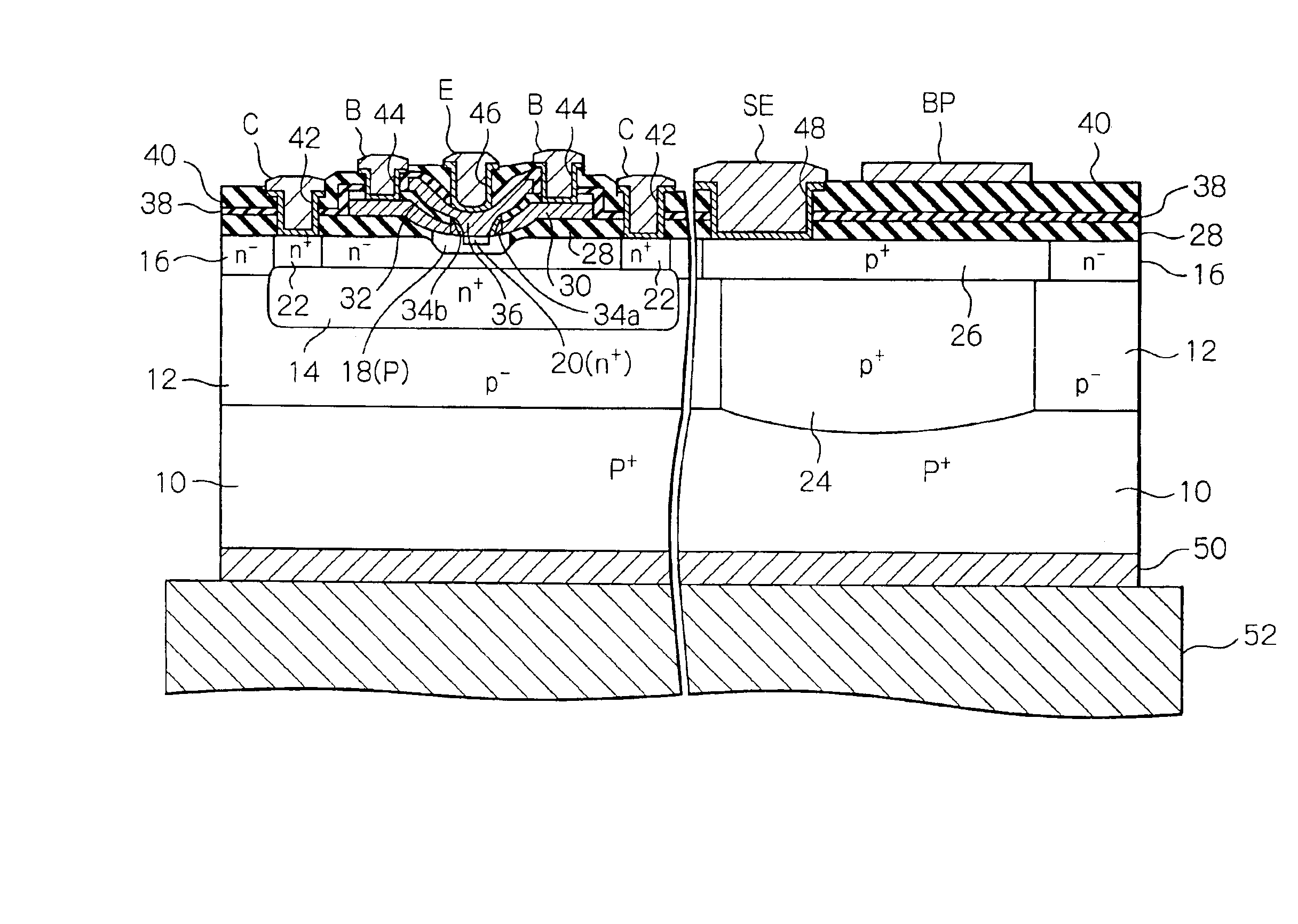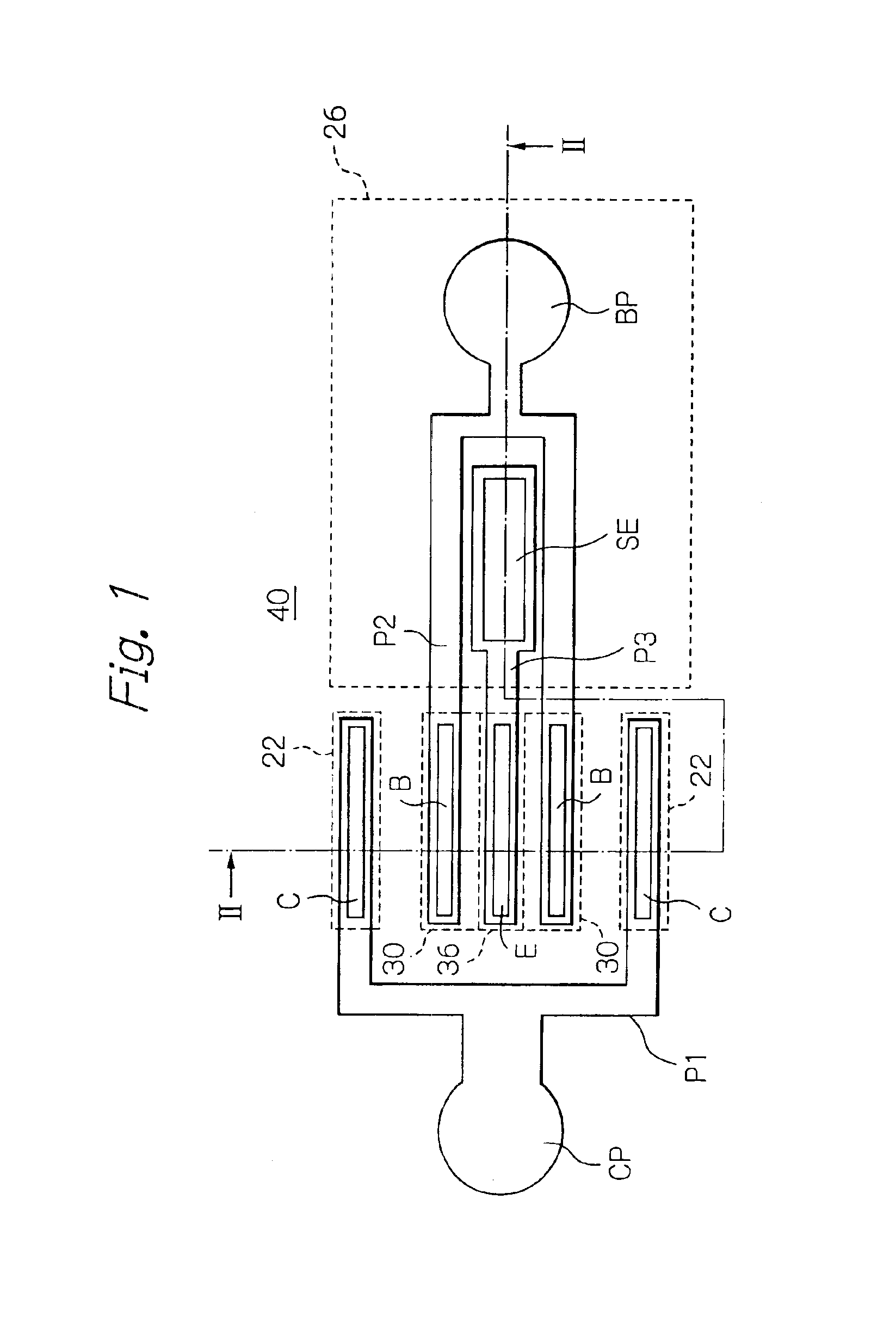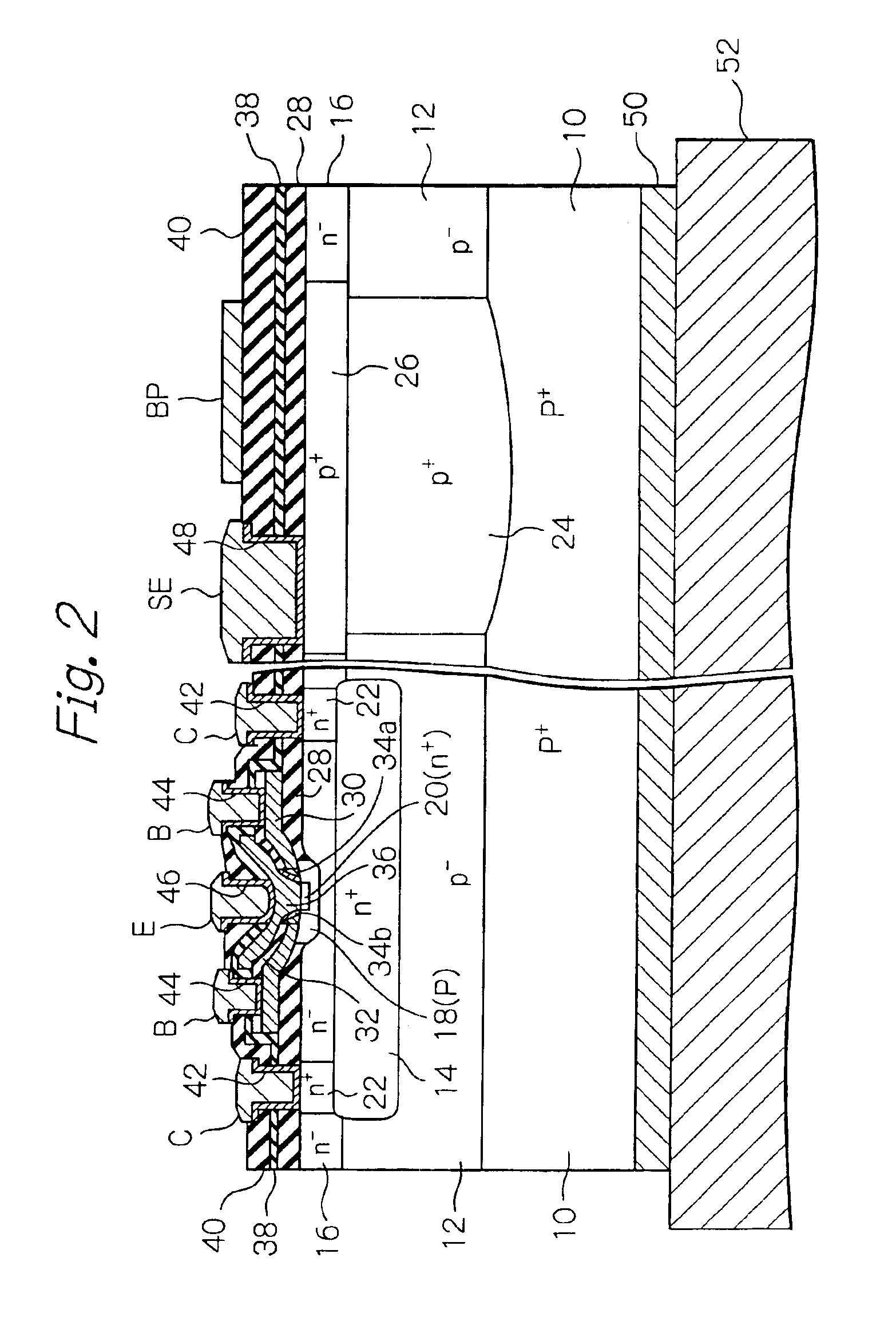Semiconductor device including bipolar junction transistor, and production method therefor
- Summary
- Abstract
- Description
- Claims
- Application Information
AI Technical Summary
Benefits of technology
Problems solved by technology
Method used
Image
Examples
first embodiment
[0056]Referring to FIGS. 1, 2, and 3, a semiconductor device including a bipolar junction transistor (BJT) according to the present invention is shown. Note, FIG. 1 shows the semiconductor device as a plan view, and FIG. 2 shows a cross section of the semiconductor device, taken along the II—II line of FIG. 1.
[0057]As shown in FIG. 2, the semiconductor device includes a high concentration / low resistance p+-type substrate 10, which is derived from a p+-type diffusion layer formed on a silicon wafer (not shown), and a low concentration / high resistance p−-type epitaxial layer 12 formed on the high concentration / low resistance p+-type substrate 10. A high concentration / low resistance n+-type collector-buried region 14 is formed in an element-formation area previously defined on the p−-type epitaxial layer 12.
[0058]The semiconductor device also includes a low concentration / high resistance n−-type epitaxial layer 16 formed on the p−-type epitaxial layer 12 having the n+-type collector-bur...
second embodiment
[0093]FIG. 25 shows the semiconductor device including the bipolar junction transistor (BJT) according to the present invention. Note, in this drawing, the features similar to those of FIG. 2 are indicated by the same references.
[0094]In the second embodiment, when a part of the first polycrystalline silicon layer 30 is left on the first insulation layer 28 as shown in FIG. 23, another part 30a of the first polycrystalline silicon layer 30 is left on the first insulation layer 28 as a conductive layer so as to cover the p+-type sub-emitter region 26, as shown in FIG. 25, and thus the base-bonding pad BP is encompassed with the left part or conductive layer 30a of the first polycrystalline silicon layer 30.
[0095]As is apparent from FIG. 25, the conductive layer 30a is electrically connected to the barrier metal layer 48, and therefore, the sub-emitter electrode SE. Namely, the conductive layer 30a is grounded through the intermediary of the sub-emitter electrode SE, the p+-type sub-e...
third embodiment
[0100]FIG. 28 shows the semiconductor device including the bipolar junction transistor (BJT) according to the present invention. Note, in this drawing, the features similar to those of FIG. 2 are indicated by the same references.
[0101]In this third embodiment, a p+-type channel stopper region 26a is formed in the n−-type epitaxial layer 16 to cover the p+-type diffusion buried layer 24, and a field silicon dioxide layer 78 is then formed on the p+-type channel, using a Local Oxidation of Silicon (LOCOS) method. Then, a first insulation layer 28 and a first polycrystalline silicon layer 30 are formed and laminated in order on the n−-type epitaxial layer 16 having the field silicon dioxide layer 78, and are processed in substantially the same manner as in the above-mentioned first embodiment. Subsequently, a second insulation layer 32 and a second polycrystalline silicon layer 36 are formed and laminated in order on the first polycrystalline silicon layer, and are processed in substan...
PUM
 Login to View More
Login to View More Abstract
Description
Claims
Application Information
 Login to View More
Login to View More - R&D
- Intellectual Property
- Life Sciences
- Materials
- Tech Scout
- Unparalleled Data Quality
- Higher Quality Content
- 60% Fewer Hallucinations
Browse by: Latest US Patents, China's latest patents, Technical Efficacy Thesaurus, Application Domain, Technology Topic, Popular Technical Reports.
© 2025 PatSnap. All rights reserved.Legal|Privacy policy|Modern Slavery Act Transparency Statement|Sitemap|About US| Contact US: help@patsnap.com



